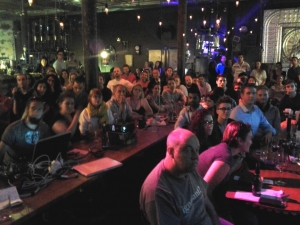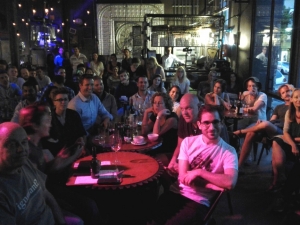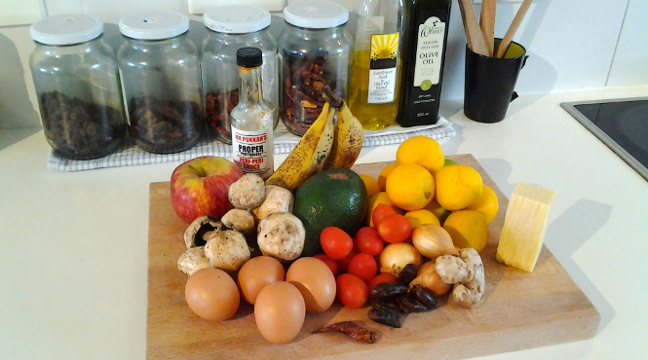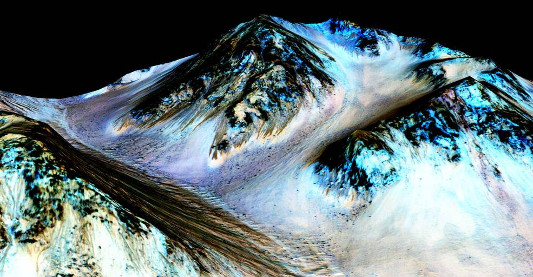A Morning to Remember
Bernard and slept for a second night in an empty apartment, below and one door over from Lindah’s. Lindah was thoughtful to purchase a brand new mattress before my arrival (I am very well cared for here :)
Bernard had arrived to Nairobi from Nakuru just shortly before I arrived to the airport. As I shared, our reunion was wonderful and so much fun. We ate at a fancy Italian restaurant in the city center, on our way back to Lindah’s flat. The walk was very scary for me, as it was dark the traffic roaring by, and my body hyper alert given my experiences in Cape Town.
By day, of course, it did seem as bad.
Lindah had eluded to her flatmate as being a little odd, but I did not realise just how much Lindah had been dealing with this past few months. Lindah and Jen shared a bath, each with their own rooms. The kitchen Lindah used, but Jen was not granted access (a longer story for another time).
There had been issues between them, each time resolved by the land lady, a woman in her late sixties, I assume, who is as much a soothsayer as she is the owner of this large, relatively new apartment building.
Our first night, at roughly 8 pm, Jen cranked up her music so loud that it was difficult to have a conversation. Lindah commented that she does this often, sometimes leaving the music running all night. The bass caused the floor and walls to vibrate. It was mind numbing, to say the least. I could not believe Lindah was living with this, and had never said anything to me. But yes, the landlady had been informed on more than one occasion.
Yesterday (Sunday) morning, Jen started the music again. Bernard went down the hall to speak with her, but to no avail. I thought I’d give it a try. I stepped into the hall just as she walked from her room to the bath. I asked her if she’d like to join us for breakfast. No answer. She slammed the bathroom door.
Her hostility was palatable. Without thinking, as the music was causing my head to hurt, I pushed aside the curtain suspended across her doorway, hoping to find a volume control within reach. I was standing there, in the doorway for less than 10 seconds, when I turned and took one step back into the hall way.
Jen had just come back out of the bathroom and pushed me aside, slamming the door in my face (quite literally). I knocked hard on the door three times, hoping to address the situation a bit more directly, but no response.
I realised I was shaking, so volatile was the situation. This woman was clearly not in her right mind.
I returned to Lindah’s flat, apologised if I had escalated the situation. We packed our things for the day, and left for the museum.
…
Upon our return, Jen had become quite excited over the unfolding of the morning. Bernard went to speak with her at length, in her room. She demanded an apology from me. I went to her room and apologised for having entered her room.
She responded, “I don’t believe your apology is good enough. I mean, there was a strange man I have never seen before in my room. I do not feel safe. You could try to hurt me.”
I apologised again.
She shook her head, her mobile phone in her hand. “You should have apologised in the morning. Now, it is too late. I believe I must call the police.”
I took a deep breath, knowing that if the police get involved, it will likely result in my having to pay a substantial bribe to not be jailed. I sensed this was not going to go well, and that she was looking for money from what Lindah later told me was the first “mazungu” (white person) to enter this apartment complex.
“Jen. That seems a bit extreme. But if you feel you need to call the police, then that is what you should do.”
“You came into my space! You invaded my privacy!”
“I pushed aside the curtain, intent upon reducing the volume of your music as your music was invading our space. We could not even have a conversation.”
“It’s not the same. I am calling the police.”
“Ok. You do what you need to do. But we are leaving for the day and I leave early in the morning.” Those last words I would later regret.
We walked to the museum and enjoyed an incredible day.
Upon our return, Jen was still unnerved. She asked Bernard (who had become the middleman) to join her in a discussion with the landlady. The three of them spoke for more than an hour while Lindah made dinner and I completed the sorting of the papers she graded, entering marks into a spreadsheet. I was nervous, inside, wondering where all of this would go. Clearly, Jen was not willing to let it end.
When Bernard returned, he said, “Everything is ok now. We all left with smiles. Wow. That landlady, she is amazing. She has so many stories to tell. But you know what she said to us? She said, “Look at me. I am an old woman now. I want to help young people have a safe place to live. I need to hear good stories, not about people fighting. This needs to be resolved because I deserve to know how well you are doing. It is not my place to take sides. So, if this cannot be resolved, I will ask both you to leave my building.”
Bernard said she told more stories, raising the spirits of Jen such that she said the issue of my having entered her apartment was resolved. I was very proud of Bernard, and quite thankful for his expertise in these kinds of affairs. Lindah said that at Pistis, he was like this too, always the negotiator, the one who resolved issues.
Bernard and I said goodnight to Lindah, and ventured down one level to the otherwise empty apartment.
We woke at 5:00 am, packed our things, returned the new mattress to Lindah’s flat, and prepared to catch our bus to Tanzania. At 6:30 am, Bernard was ready to leave when Jen called to him from the hallway. He left for just a few minutes and returned, his face concerned.
“This girl, something is not right with her. Now she says Kai has poisoned her food.”
We just shook our heads. Bernard left and went down the stairs, believing I was just behind him. I had forgotten our bag of travel food and gave Lindah a hug. My backpack was on. Jen appeared in the hall, just before me, a pad lock in hand.
Lindah realised what was happening, and moved into the hallway to stop Jen. But it was too late, she locked us in. She turned to me and said, “You poisoned my food. I want ten thousand Schilling.”
Lindah launched into her. I started shaking, feeling quite physically violated despite the lack of physical contact. Jen was clearly irate, her eyes wide and physical gestures scary to me.
“This is crazy. I have to catch a bus. You can’t lock us inside!”
“You poisoned my food! I want ten thousand Schilling to replace it!”
“Ten thousand?! What? That’s crazy!” Lindah yelled.
I was going to confront her again when Lindah demanded that I just go back into her room. I did, but it was clear she was not going to let us out.
I grabbed Lindah’s hammer and walked toward the lock, intent to break it open (easily done on small locks such as this one). Jen jumped in front of me and physically blocked me, pushing at my chest.
Lindah again demanded that I walk away, which I did as I was increasingly afraid of Jen. Lindah picked up her phone to call the landlady. Just then, Bernard appeared at the door again. He asked to come in. Jen hesitated, then opened the door. I yelled, “Do not let her shut that again!” as Lindah explained what Jen was doing.
Bernard shoved his foot to the door jam just as she attempted to slam the door shut. I waited, hoping the tension would diminish. It did not. Bernard tried to calm Jen down, but she remained steadfast in her demand for payment.
Lindah had reached the landlady who sent a manger toward our flat.
I saw an opportunity, and decided to just press my way out. Jen physically blocked me and grabbed my backpack by the front straps, pressing against my shoulders and chest. I pressed harder, forcing her through the exit and into the exterior hallway. She held on to my backpack such that I could not walk.
I was now in fighting mode, contemplating how to act. I did not want to hurt her, but her grip would not release. As we were yelling and wrestling, I applied pressure to a pressure point on her wrist, but to no avail.
I swept her legs out from under her, hoping the fall would force her to let go. That too failed. Now, I found myself nearly on top of her, trying not to fall to the ground as my backpack, with camera and laptop was about to be pulled over my shoulders.
Just then a thin man appeared rounded the corner. I later learned he is the property manager. I was free of Jen only to now be physically retrained by this man who clearly saw me as the aggressor. I wanted out of this mess immediately, before it got to be a real issue, but he would not let me leave, insisting we called the police.
I worked my way past him and down the stairs. Bernard behind me, Lindah to follow. We made it to the ground floor, and out the front door. Lindah, Bernard, and I stood there, all three of us shaking, wondering what to do.
Lindah insisted Bernard and I should go, as we were already behind schedule. I yet had to get to the ATM and convert some Kenyan schilling to U.S. dollars before boarding the bus.
I suggested to Bernard that we not leave, as I did not want for Lindah to deal with this on her own. It was too scary, too violent already. It could get worse.
We decided to stay, to catch the 2:00 PM bus instead. I remained outside the gate, in the alley, sitting on my heels, leaning against my backpack. My presence with Jen would only aggravate the situation.
Fifteen minutes, two men walked past me, ducked through the steel gate and into the ground floor of the apartment complex. I did not know then, but those were the police who had been called.
Ten minutes more and Ben stuck his head outside the gate, asking me to come inside. The building owner, manager, two police officers, Jen, Lindah and Bernard were standing in a circle, talking. I remained on the outside.
The police officer closest to me turned to me, asking for my name. He then stated, “You entered this woman’s apartment without permission. That is illegal. You need to come to the police station.” I responded with an explanation that I did not in fact enter her apartment, but only looked inside. He repeated his statement again, insisting we had to go to the station.
I knew that if I was forced to go, the only way out was to pay a large sum of money.
Fortunately, Lindah intervened, suggesting that everyone be able to tell their story. The police officers agreed and Bernard started. He presented his version primarily in Swahili, so I caught only a few words, but the gist I understood. I was given a chair after the piece of wood I rested upon slid to the ground. I remained low-key, keeping my eyes low, focused on the concrete of the court yard in which we all stood.
Bernard was diplomatic, expressing how just the night before a total resolution has been reached for issues building to this point. He neither accused, nor lost ground. I was very impressed. Lindah went next, explaining what happened that morning. I rose to my feet, to take a turn (as I was not clearly to be given one), saying simply, “I offered Jen breakfast. She slammed the door in my face, accused me of poisoning her food, demanded 10,000 Schillings, and physically attacked me. I just want to catch the next bus to Tanzania and leave this mess behind, as it makes no sense to me.”
Jen went last. Her voice as clearly accusatory and enraged. Roughly half way through, as she claimed I had physically attacked her, the police officer turned to me and rolled his eyes. I felt some relief that she might be making a fool of herself with such an exaggerated story.
When she was done, one of the police officers asked, in English, “So what do you want from this man?”
Jen responded, “Ten thousand Schilling for poisoning my food.”
“Ten thousand? That is a lot!”
“Ok. Five thousand will be enough.”
“Which food, exactly, do you believe he poisoned?”
She hesitated, “The tea. He poisoned the tea.”
“Five thousand Schilling of tea?”
“Two thousand will cover the tea.”
“Ok. Here is what we will do. Go get your tea and we’ll take it to the police station lab. If it contains poison, this man will replace your tea. If it does not, you will buy him a new ticket for his missed bus to Tanzania.”
Suddenly Jen was not so interested in the repayment, saying she did not need the reimbursement.
The policemen said there did not seem to be further need of their assistance. I immediately addressed the owner and asked if we could move Lindah into a new apartment, as she was not legally able to immediately evict this clearly unstable girl. I promised to pay the difference in cost that day, and December before I departed.
Bernard, Lindah, and I spent the next four hours cleaning and moving her from the 3rd floor to the 2nd, into a new, larger, much nicer apartment free of psychopathic women.









